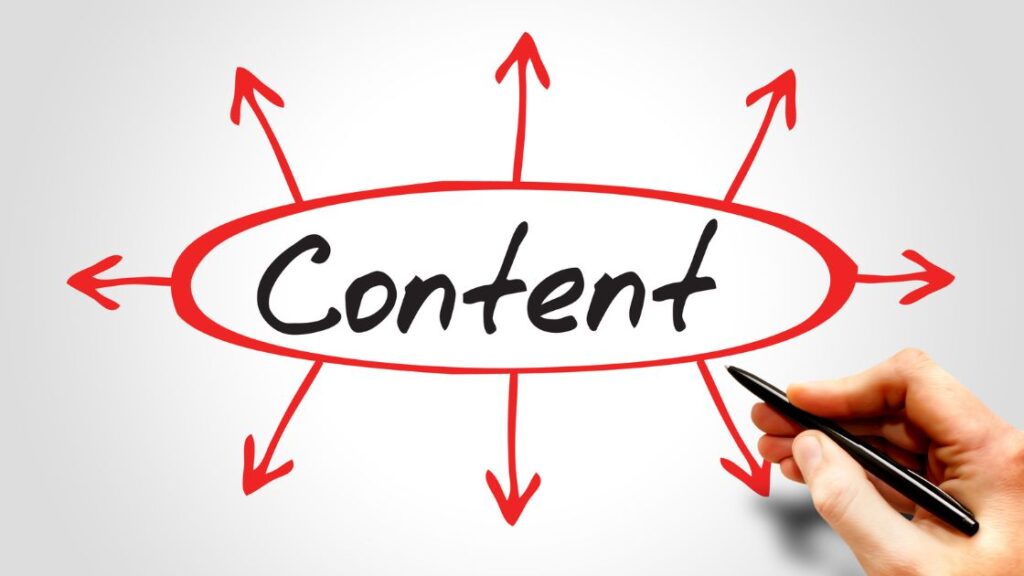I. Introduction
In the digital age, a robust content strategy is crucial for engaging your audience and driving traffic to your website. An effective content strategy not only enhances your online visibility but also fosters a deeper connection with your target audience. This guide will explore the essential components of a successful content strategy, equipping you with the necessary tools and insights to elevate your online presence.
II. Developing a Content Calendar
A. Definition and Purpose of a Content Calendar
A content calendar serves as a roadmap for your content marketing efforts. It helps in organizing content for consistency and aligns your efforts with broader marketing goals.
- Organizing Content for Consistency: A well-structured calendar ensures that you publish content regularly, keeping your audience engaged.
- Aligning with Marketing Goals: By scheduling content around key events or campaigns, you can better align your messaging with your business objectives.
B. Steps to Create a Content Calendar
Creating a content calendar involves several key steps:
- Identifying Key Dates and Events: Mark important dates relevant to your industry, holidays, and product launches.
- Scheduling Content Types and Formats: Plan a mix of blog posts, social media updates, videos, and newsletters to keep your content diverse.
C. Tools and Resources for Content Calendar Creation
Utilizing the right tools can streamline your content calendar creation:
- Software Options: Tools like Trello, Asana, and CoSchedule can help you manage your calendar effectively.
- Templates and Spreadsheets: Simple Excel or Google Sheets templates can also work wonders for smaller teams.

III. Importance of Keyword Research
A. Understanding Keywords and SEO
Keywords are phrases or terms that users type into search engines. Understanding how to leverage them is vital for your SEO strategy.
- Definition of Keywords: Keywords are the foundation of SEO, guiding content creation and optimization.
- Role in Search Engine Optimization: Properly integrated keywords can elevate your content’s visibility in search engine results.
B. How to Conduct Effective Keyword Research
To maximize your SEO efforts, you need to conduct thorough keyword research:
- Tools for Finding Keywords: Utilize tools like Google Keyword Planner, SEMrush, or Ahrefs for in-depth keyword analysis.
- Analyzing Competitor Keywords: Investigate what keywords your competitors are ranking for to identify opportunities.
C. Integrating Keywords into Your Content Strategy
Once you’ve identified your keywords, it’s essential to integrate them effectively:
- On-Page Optimization: Incorporate keywords in titles, headings, and throughout the content naturally.
- Balancing Keyword Density: Aim for a keyword density of around 1-2% to avoid stuffing while ensuring relevance.
IV. Adapting Content for Different Platforms
A. Understanding Platform-Specific Requirements
Each platform has its unique requirements that dictate how content should be created and shared:
- Differences Between Blogs, Social Media, and Email: Understand the nuances of each platform to tailor your content accordingly.
- Tailoring Content Length and Style: Adjust your tone, language, and length based on the platform’s audience expectations.
B. Best Practices for Cross-Platform Adaptation
Repurposing content is an efficient way to maximize your efforts:
- Repurposing Content Effectively: Transform a blog post into an infographic or a series of social media posts to reach different audience segments.
- Maintaining Brand Voice and Consistency: Ensure that your brand voice remains consistent across all platforms.
C. Tools for Managing Multi-Platform Content
Managing your content across various platforms can be simplified with the right tools:
- Scheduling Tools: Tools like Buffer and Hootsuite allow for the scheduling of posts across multiple platforms.
- Analytics for Different Platforms: Use platform-specific analytics to gauge performance and optimize content accordingly.
V. Engagement Strategies for Website Content
A. Importance of Engagement in Content Strategy
Engagement is a critical component of your content strategy that can significantly impact your SEO:
- Role of Engagement in SEO: Higher engagement rates can lead to improved search rankings.
- Building a Community Around Your Content: Engaging content fosters loyalty and community among your audience.
B. Techniques to Increase User Engagement
Implementing effective engagement strategies can enhance the user experience:
- Interactive Content Formats: Quizzes, polls, and interactive infographics can capture user interest.
- Calls-to-Action (CTAs): Encourage users to comment, share, or take specific actions with clear CTAs.
C. Utilizing Feedback and User Interaction
Feedback is invaluable for refining your content strategy:
- Analyzing Comments and Feedback: Monitor user interactions to understand their needs and preferences.
- Adapting Content Based on User Insights: Use feedback to inform future content and make necessary adjustments.
VI. Understanding Your Target Audience
A. Defining Your Target Audience
A clear understanding of your target audience sets the foundation for your content strategy:
- Creating Audience Personas: Develop detailed profiles of your ideal customers to tailor content effectively.
- Segmenting Your Audience: Divide your audience into segments based on demographics, interests, and behaviors.
B. Research Methods to Understand Your Audience
Employ various research methods to gain insights into your audience:
- Surveys and Interviews: Conduct surveys to gather direct feedback from your audience.
- Analyzing Website Analytics: Use tools like Google Analytics to track user behavior and preferences.
C. Aligning Content with Audience Needs
Ensure your content resonates with your audience’s interests and needs:
- Addressing Pain Points: Create content that solves specific problems your audience faces.
- Providing Value Through Relevant Content: Focus on delivering high-quality, informative content that adds value.

VII. Measuring Content Performance Metrics
A. Key Metrics to Track
Regularly measuring content performance is essential for continuous improvement:
- Traffic and Engagement Metrics: Monitor page views, time on page, and bounce rates to assess user engagement.
- Conversion Rates and ROI: Track how well your content drives conversions and the return on your investment.
B. Tools for Measuring Content Performance
Utilize various tools to gain insights into your content’s effectiveness:
- Analytics Platforms: Google Analytics and similar platforms provide comprehensive performance data.
- Social Media Insights: Analyze engagement metrics on social media platforms to refine your strategy.
C. Adapting Content Strategy Based on Metrics
Use performance metrics to guide your content strategy:
- Identifying Areas for Improvement: Analyze metrics to pinpoint underperforming content.
- Making Data-Driven Content Decisions: Adjust your strategy based on insights gained from your performance data.
VIII. Balancing Informative and Promotional Content
A. The Importance of Balance in Content Strategy
Achieving the right balance between informative and promotional content is vital for building trust:
- Building Trust with Informative Content: Providing valuable insights establishes credibility with your audience.
- Driving Sales with Promotional Content: Promotional content is necessary for generating leads and conversions.
B. Strategies for Creating Balanced Content
Implement strategies to maintain a healthy content balance:
- Content Ratio Guidelines: A common guideline is the 80/20 rule – 80% informative and 20% promotional.
- Mixing Formats and Styles: Vary your content types to keep your audience engaged.
C. Evaluating the Effectiveness of Your Balance
Regularly assess the effectiveness of your content balance:
- Analyzing Engagement and Conversion Rates: Measure how well your audience responds to different content types.
- Adapting Strategy Based on Performance: Be prepared to adjust your content strategy based on performance metrics.
IX. Conclusion
In summary, creating an effective content strategy requires careful planning and execution across several key areas, including developing a content calendar, conducting keyword research, and understanding your audience. By implementing the strategies outlined in this guide, you can enhance user engagement, measure performance effectively, and achieve a balance between informative and promotional content.
Now is the time to take action! Start developing your content strategy today and watch your website flourish.


